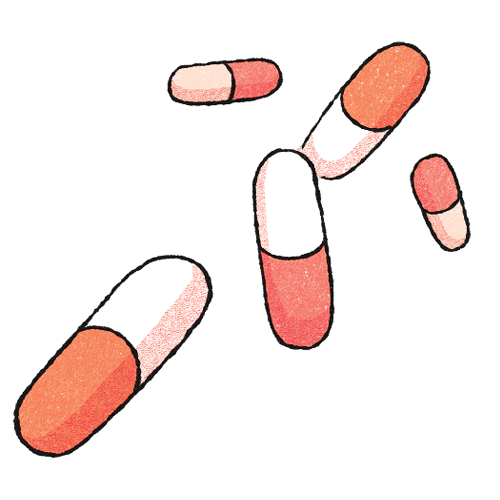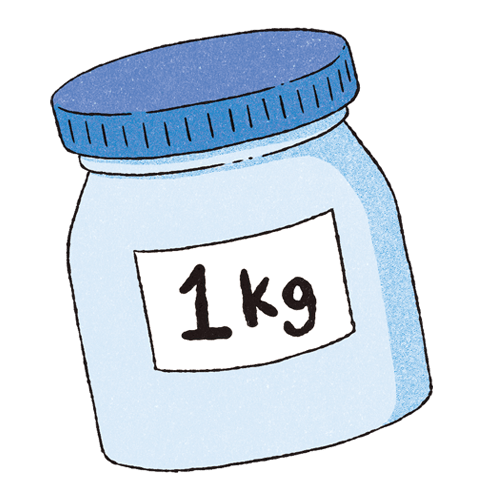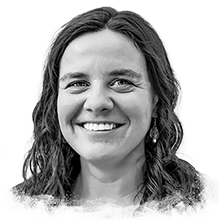Advertisement
Grab your lab coat. Let's get started
Welcome!
Welcome!
Create an account below to get 6 C&EN articles per month, receive newsletters and more - all free.
It seems this is your first time logging in online. Please enter the following information to continue.
As an ACS member you automatically get access to this site. All we need is few more details to create your reading experience.
Not you? Sign in with a different account.
Not you? Sign in with a different account.
ERROR 1
ERROR 1
ERROR 2
ERROR 2
ERROR 2
ERROR 2
ERROR 2
Password and Confirm password must match.
If you have an ACS member number, please enter it here so we can link this account to your membership. (optional)
ERROR 2
ACS values your privacy. By submitting your information, you are gaining access to C&EN and subscribing to our weekly newsletter. We use the information you provide to make your reading experience better, and we will never sell your data to third party members.
Biological Chemistry
David Romney
This biochemist engineers enzymes to make amino acid derivatives for drugs with less waste
by Bethany Halford
July 15, 2022
| A version of this story appeared in
Volume 100, Issue 25

Credit: Will Ludwig/C&EN/Tim Peacock/Boston Creative Headshots
When faced with a challenge, David Romney likes to dive right into the deep end. After he struggled with introductory chemistry as an undergraduate at the California Institute of Technology, he decided that the best way to overcome his frustration with the course was to become a chemistry major. As a graduate student, he wrestled with chemical syntheses of amino acids, so he devoted his postdoc to finding a better way to make these molecules using engineered enzymes. Romney even plunges into his hobbies headfirst: he taught himself how to play electric guitar and now loves to shred a good heavy-metal riff.
But perhaps the best illustration of Romney’s willingness to leap into a new enterprise is his most recent career move. Although he knew nothing about business or doing chemistry on large scales, in 2019 Romney cofounded Aralez Bio—a company that uses engineered enzymes to churn out kilograms of unusual amino acids and other chemical building blocks.
Advertisement
The willingness to tackle a problem in an unfamiliar area is a mark of a great scientist and a great entrepreneur, says Frances Arnold, a chemical engineering professor at Caltech and a cofounder of Aralez Bio. “David has that in spades,” she says. “He’s humble and understated but wickedly smart. And I think it takes a tremendous amount of guts to jump into a situation like he did.”
Aralez Bio’s core technology involves an engineered version of the enzyme TrpB that can make derivatives of the amino acid tryptophan. The company’s customers, including major pharmaceutical companies, use the tryptophan derivatives as components of therapeutic peptides and other drug candidates.
Making these amino acid derivatives by chemical synthesis is challenging because of tryptophan’s reactive indole side chain, its polar amino acid groups, and its stereocenter. With the engineered enzyme, Romney says, making tryptophan derivatives is as simple as mixing the enzyme with an indole and the amino acid serine or a serine derivative. No protecting groups are needed, and the enzyme sorts out the stereochemistry. “Because the reaction is so mild, it can tolerate functionality that would otherwise be prone to decomposition,” Romney says. The only by-product is water, so the route is environmentally friendly.
Romney started working on these enzymes as a postdoc in Arnold’s lab. Back then, he says, it didn’t really matter how much material he made because he was just trying to publish a paper that showed he could use the directed evolution of enzymes to make a nifty, new amino acid. Making a gram of a particular amino acid was considered a major feat.
But that all changed when he started Aralez Bio with Arnold and CEO Christina Boville. “We needed to be making 100 g or a kilogram,” Romney says. “And because most of our customers were in the pharmaceutical sector, there were also a lot of requirements about purity.” Romney, who is the company’s chief technology officer, had to reinvent how the company produced its amino acids so that the process worked on a much bigger scale and gave purer products. “I had to relearn everything I thought I knew about chemistry,” he says.
Now, Romney says, the company is working on broadening the scope of the amino acids it makes. These molecules could be used in agrochemicals, flavorings, and fragrances. The company is also pursuing new applications for its amino acids.
“It’s hard to know what’s going to happen next year, let alone 10 years from now,” Romney says, “but I think that what I’m looking forward to right now is really growing the company and becoming the go-to supplier of weird nonnatural amino acids.”

Vitals
Current affiliation: Aralez Bio
Age: 35
PhD alma mater: Yale University
Hometown: Baltimore
If I were an element, I'd be: “Fluorine. It changes everything you thought you knew about chemistry and gives naturally occurring molecules new and exciting properties.”
My alternate-universe career: “I would be the lead guitar player in a heavy-metal band.”
See the Talented 12 present their work at a virtual symposium Sept. 19, 20, and 21. Register for free at cenm.ag/t12symposium.

|

|
When faced with a challenge, David Romney likes to dive right into the deep end. After he struggled with introductory chemistry as an undergraduate at the California Institute of Technology, he decided that the best way to overcome his frustration with the course was to become a chemistry major. As a graduate student, he wrestled with chemical syntheses of amino acids, so he devoted his postdoc to finding a better way to make these molecules using engineered enzymes. Romney even plunges into his hobbies headfirst: he taught himself how to play electric guitar and now loves to shred a good heavy-metal riff.
Vitals
▸ Current affiliation: Aralez Bio
▸ Age: 35
▸ PhD alma mater: Yale University
▸ Hometown: Baltimore
▸ If I were an element, I’d be: “Fluorine. It changes everything you thought you knew about chemistry and gives naturally occurring molecules new and exciting properties.”
▸ My alternate-universe career: “I would be the lead guitar player in a heavy-metal band.”
But perhaps the best illustration of Romney’s willingness to leap into a new enterprise is his most recent career move. Although he knew nothing about business or doing chemistry on large scales, in 2019 Romney cofounded Aralez Bio—a company that uses engineered enzymes to churn out kilograms of unusual amino acids and other chemical building blocks.
The willingness to tackle a problem in an unfamiliar area is a mark of a great scientist and a great entrepreneur, says Frances Arnold, a chemical engineering professor at Caltech and a cofounder of Aralez Bio. “David has that in spades,” she says. “He’s humble and understated but wickedly smart. And I think it takes a tremendous amount of guts to jump into a situation like he did.”
Aralez Bio’s core technology involves an engineered version of the enzyme TrpB that can make derivatives of the amino acid tryptophan. The company’s customers, including major pharmaceutical companies, use the tryptophan derivatives as components of therapeutic peptides and other drug candidates.
Making these amino acid derivatives by chemical synthesis is challenging because of tryptophan’s reactive indole side chain, its polar amino acid groups, and its stereocenter. With the engineered enzyme, Romney says, making tryptophan derivatives is as simple as mixing the enzyme with an indole and the amino acid serine or a serine derivative. No protecting groups are needed, and the enzyme sorts out the stereochemistry. “Because the reaction is so mild, it can tolerate functionality that would otherwise be prone to decomposition,” Romney says. The only by-product is water, so the route is environmentally friendly.
Romney started working on these enzymes as a postdoc in Arnold’s lab. Back then, he says, it didn’t really matter how much material he made because he was just trying to publish a paper that showed he could use the directed evolution of enzymes to make a nifty, new amino acid. Making a gram of a particular amino acid was considered a major feat.
But that all changed when he started Aralez Bio with Arnold and CEO Christina Boville. “We needed to be making 100 g or a kilogram,” Romney says. “And because most of our customers were in the pharmaceutical sector, there were also a lot of requirements about purity.” Romney, who is the company’s chief technology officer, had to reinvent how the company produced its amino acids so that the process worked on a much bigger scale and gave purer products. “I had to relearn everything I thought I knew about chemistry,” he says.
Now, Romney says, the company is working on broadening the scope of the amino acids it makes. These molecules could be used in agrochemicals, flavorings, and fragrances. The company is also pursuing new applications for its amino acids.
“It’s hard to know what’s going to happen next year, let alone 10 years from now,” Romney says, “but I think that what I’m looking forward to right now is really growing the company and becoming the go-to supplier of weird nonnatural amino acids.”























Join the conversation
Contact the reporter
Submit a Letter to the Editor for publication
Engage with us on Twitter